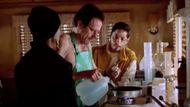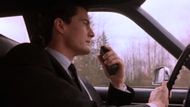The opening TV program scenes are important because they set the pace while introducing major characters and providing initial story suggestions. Most TV series that become huge successes begin to captivate their audiences from the opening scenes.
These TV shows gain viewer attention by starting with dramatic events, emotional plot points, and powerful character development. The opening scenes of Twin Peaks, The Sopranos, and The Walking Dead struck a profound chord with viewers, apart from the Breaking Bad TV show. Others like Fleabag, Mr. Robot, and The Newsroom exhibit compelling narratives featuring original presentation elements and compelling story concepts.
These initial moments left a lasting impression because they displayed powerful emotion, boldness, and mental stimulation. These TV shows' opening sequences demanded viewers' undivided attention because they promised an unforgettable experience.
Disclaimer: This article is based on the writer's opinion. Readers' discretion is advised.
The list of 10 best TV show opening scenes that grabbed us from the first second is provided below:
10. Breaking Bad (Pilot Episode)

The initial scene is set in the desert of New Mexico. Viewers see Khaki trousers being carried by the wind and land on a dirt path. An RV crashes through the road while its driver operates without pants and a protective gas mask. He drives the vehicle containing two unconscious passengers and an unconscious passenger sleeping in the vehicle.
Walter White exits his crashed vehicle before recording a final family message for his relative. He then positions himself on the road with a firearm, expecting sirens to come. After seeing how high school teacher Walter White got into these predicaments, viewers are immediately thrown into a chaotic and enigmatic universe.
9. Twin Peaks (Pilot Episode)

Pete Martell starts his daily fishing excursion in the peaceful Twin Peaks town. The riverbank observation reveals to Pete Martell the discovery of Laura Palmer's plastic-wrapped corpse. The tranquil village is plunged into complete chaos upon the shocking discovery of Laura Palmer's body, prompting a thorough investigation.
The setting's tranquility attracts attention before the unsettling revelation does, creating an unsettling atmosphere. The first sequence clearly defines that the show is a mix of paranormal and daily societal concerns. The scene allowed the audience to follow its intriguing story.
8. The Sopranos (Title Sequence)

The series introduces Tony Soprano during his visit to his psychologist, while he discloses his depressive mental state. The show opens unusually, as traditional mob shows typically unveil their protagonists first through demonstrations of power and crime.
The show diverges from the start by presenting the main character as emotionally broken because this establishes a focus on the mental complexities of its characters. The series begins with Tony Soprano visiting a psychiatrist, allowing viewers to observe a mob leader's mental processes while providing new insights into the genre.
7. The X-Files (Opening Sequence)

The premiere starts with rain and a dark, ominous view of Oregon. A young woman, terrified, runs across the wilderness. The young woman experiences a sudden illumination that lifts her body into the air. The following day, her body appears with unidentifiable marks. The program has atmospheric elements established in its opening framework and continues throughout the television series.
The narrative begins by presenting inexplicable events that lead to the government's concealed information. The audience is immediately drawn in by the strikingly ominous mood and the tense musical accompaniment. The first scene stimulates our attention in learning more about what is happening. This sequence establishes the fundamental elements that drive the show towards exploring the elements of mystery and mysteries of the unknown.
6. The Walking Dead (Pilot Episode)

At the beginning of the episode, Sheriff Rick Grimes traverses an empty gas station complex and searches for fuel. The region maintains absolute quietness while surrounding itself with several damaged automobiles. The sudden appearance of a bear-holding child catches his eye. Due to his call, the female zombie spins around to display her decomposing features. Rick is forced to shoot her.
The sudden revelation of death signals to the audience that everything has become different. This opening montage establishes a dark and foreboding tone for the series. The opening sequence of the new world reality comes into focus through its brutal depiction.
5. Westworld (Pilot Episode)

In the pilot episode of Westworld, Dolores sits upright in her chair while the camera shows her life-like body nearby. As it passes her eye, a fly places its body on her face without getting a reaction from Dolores. Her programming has made it clear that she is not permitted to participate in any form of violence against sentient beings. Later, she murders by slaying the fly, demonstrating a paradigm shift in her behavior.
The audience can detect a tiny development suggesting the robots have gained intelligence capabilities. The calm and unsettling setting in this introduction invites viewers to question reality. This structure allows the show to highlight its core issues, such as artificial intelligence systems and artificial life.
4. The Newsroom (Pilot Episode)

At the start of The Newsroom pilot episode, Will McAvoy joins a panel event at a college. He refuses to respond to a question on American grandeur at a college function. After a silence, the audience displays a sign, and McAvoy begins his impromptu, impactful statement. Statistics revealing America's shortcomings in several sectors cast doubt on its reputation as a great nation.
This surprising revelation surprises viewers. Instead of typical patriotism, we receive a candid, heartfelt assessment. It is clear from the first episode that the show will deal with important political and media concerns. Jeff Daniels plays his role with incredible passion, holding the audience's attention throughout the narrative. From the opening seconds, this sequence distracts viewers through its brave delivery of unsettling realities.
3. Fleabag (Pilot Episode)

The main character of Fleabag pushes through a direct camera address to reveal her perspectives about the world throughout the pilot episode. This technique, called breaking the fourth wall, puts viewers in a confiding environment, which makes them feel a sense of personal connection. She discusses her experiences with sincerity and a humorous touch throughout her monologue. The method produces engagement since viewers experience it as deeply authentic.
This method helps viewers understand Fleabag's innermost thoughts and the challenging aspects of her nature. The direct-to-camera technique creates a special connection between the speaker and the audience by enabling viewers to relate to her story.
The show distinguishes itself by presenting a distinct point of view through narrative storytelling. The opening sequence captivates audiences initially by sparking their curiosity about the story she will share.
2. Mr. Robot (Pilot Episode)

Viewers are introduced to Elliot in the first episode of Mr. Robot as a quiet person who works as a cybersecurity specialist and spends his evenings hacking computers. During his visit to the local coffee shop, Elliot confronts the proprietor, Ron. Elliot used his cyber expertise to discover that Ron was running a covert website with explicit content about child s*x. Elliot exposes the proof of Ron's illegal actions by breaking into his systems, leading to Ron's incarceration.
This scenario is defined by Elliot's ethical justice stance and his potent demonstration of hacking skills. The illegal nature of his actions does not stop him from harassing wrongdoers through his hacking skills. The scene captures viewers because it shows the entrance of a morally ambiguous character who lives in ethical gray zones.
The first episode introduces key people and major topics such as monitoring, control, and rebellion. His illegal acts raise questions about what is acceptable and immoral in today's secret-filled environment.
1. The Last of Us (Pilot Episode)

The Last of Us premieres its first episode during an ordinary 2003 day. During the beginning scenes, we observe Joel, who has sole custody of Sarah, while both stay busy with their ordinary everyday activities. A lethal fungal outbreak emerges unexpectedly after a short period of normalcy. Joel, his siblings, and Sarah attempt to flee the scene of danger. The city displays panic and destruction as they drive through it.
The story escalates when they face toxic people under hazardous circumstances. A soldier accidentally fires his weapon, which results in Sarah losing her life as Joel cradles her body. The tragic death of Sarah triggers an emotional foundation that dominates the entire series. The sudden death and traumatic experiences the characters face become visible.
The scene excites viewers because it mixes powerful movement with heartfelt feelings. We develop caring attitudes toward the main characters because the story reveals the grim situation in their world. The moving introduction immediately engages the audience's emotions.
We can conclude that the initial pilot episodes of these television series highlighted the strength of a solid TV show start. The special elements found in each introduction included powerful drama, high excitement levels, and surprise twists. People instantly recognized the story's narrative tone and the difficulties that awaited the main characters.
The Last of Us and The Walking Dead shared tragic emotional elements, but Westworld and The X-Files established fear-based mysteries alongside curiosity by showing the viewers. The plots of The Sopranos and Mr. Robot were designed to encourage viewers to reflect on human nature and moral issues. Jurassic Park’s entire series achieved excellence by delivering immersive scenes that established elevated standards. The powerful pilot episode transformed decent stories into timeless TV classics that etched themselves into television history.
